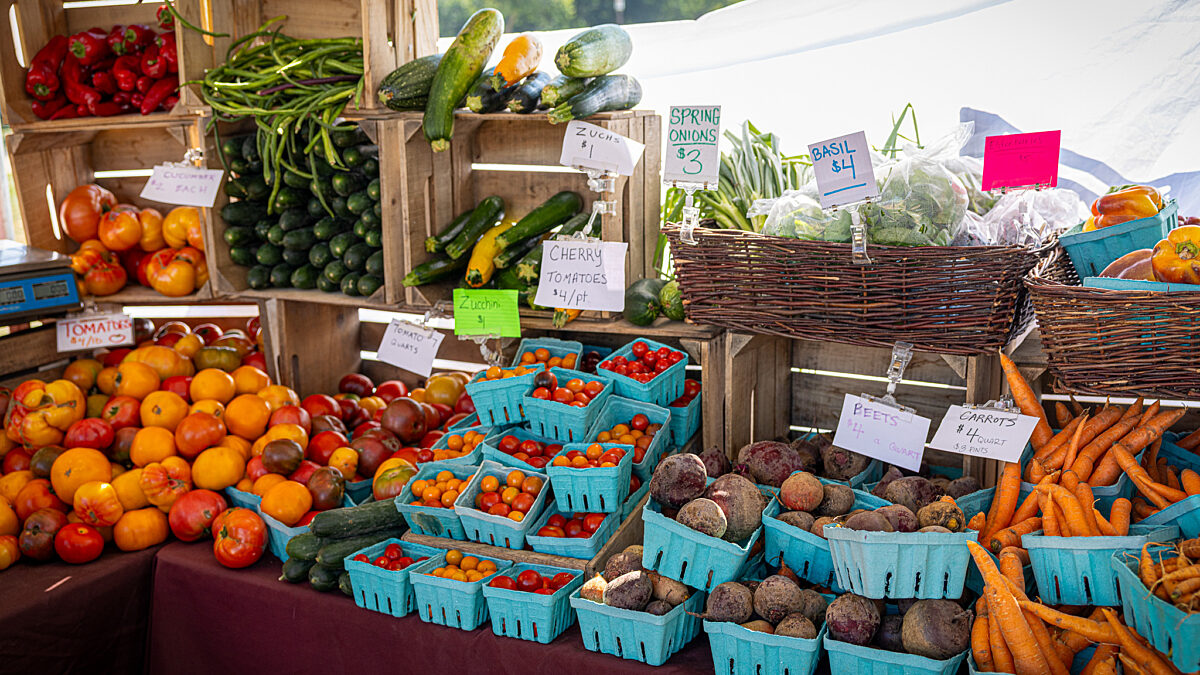Making Healthy Choices, Organic and Conventional
TOPICS
Healthier AmericaKari Barbic
Director, Executive Communications

photo credit: AFBF
Kari Barbic
Director, Executive Communications
I love fresh summer produce. Walking through the grocery store or my local farmers market takes me back to my Central Valley roots, when I would follow my dad through nectarine orchards and watermelon fields in California. We would sample pomegranates and pluots fresh in the field, long before any of these products were trendy. My dad showed me how to assess ripeness for good flavor. He taught me to steer clear of beehives and rattlesnake dens. And he taught me to value the final product over the production method. Whether organic or conventional, my dad wanted me to understand how my food was grown and to appreciate the men and women who grew it.
Organic and Conventional
We had organic and conventional produce in our home. It wasn’t an either-or choice for us. There was no ranking. My dad helped me see the benefits of both, and he taught me the ABCs of shopping for fresh produce. Those are lessons I apply weekly as I shop in urban markets, miles away from the nearest farms.
A – Assess for Flavor and Quality
Even now, I will call my dad early in the summer to ask him what is looking good this year. How did the weather treat the grapes? Will the early plums have good flavor, or should I wait for mid-summer varieties? To be clear, this quality check-in is all about flavor and preference. If you like your fruit on the tart side, the nutritional value is no different than fruit with a higher sweetness profile. Any produce that has made it to your local grocery store is safe for consumption. Fruit that was spoiled with an untimely rain shower or hit by a late freeze will get tossed in the field. If your peach has a little scar or bruise, you can just trim it off and enjoy the rest. Or, one of my favorite tricks, consider poaching them for a dessert topper.
B – Buy What You’ll Eat
Growing up around California agriculture and now working on behalf of farmers across the country, I have had the opportunity to see firsthand the sustainable and regenerative practices that farmers are using to keep our soil healthy and our air and water clean. What farmers cannot control is the food waste that can happen when produce gets to kitchens across the country. This is why my dad taught me to only buy what I can eat—and share the rest. Consumers can do our part by being good stewards of the produce we buy for ourselves and our families. Let’s keep reaching for those healthy, farm fresh snacks!
Whether organic or conventional, my dad wanted me to understand how my food was grown and to appreciate the men and women who grew it.
C – Clean Your Produce
Whether you are buying conventional or organic, you should always wash your produce. I'll admit I have lost count of the number of times, as a kid, that I enjoyed fruit fresh off the tree. My dad would simply instruct me to brush the dirt off with a clean handkerchief or t-shirt. Why was my dad confident it was safe for his young daughter to eat fresh from the field? Just like all farmers, he thinks about the safety of his family first, and he knows that when it comes to pesticide residue, federal regulations are strict. How strict are they? So strict that the Environmental Protection Agency sets regulations for residue levels to be at least 10 times below what researchers have found to be safe. To put this in context for your own snacking, you would need to eat more than 850 apples in ONE day to exceed the safety threshold for pesticide residue exposure. (Refer back to Step B.) Produce washing will rinse off any remaining dirt or debris from the field and handling- as well as what little pesticide residue that's left.
Health and Affordability
Ultimately, price is going to be a major factor in my shopping decisions. For example, I am happy to buy conventionally grown carrots for a dollar less, as I know they are just as safe and nutritious. I’m also happy to splurge on organic heirloom carrots when I want a fancier side of roast veggies for the menu. My choices for healthy eating take into account what fits my budget and meal plans for the week. When I stock up on fresh tomatoes at the farmers market this weekend and pickup red seedless grapes at the grocery store, my goal is to get some fiber and a dose of vitamin C—and hopefully, I can find some good deals along the way.
No matter the ratio of organic to conventional purchases in my shopping cart, however, my purchases are part of a healthy, well-balanced diet. And I know I am supporting hard-working farmers who care for their land and make choices that best fit their business and meet market demands. These are choices I can feel good about, and that I trust my dad can be proud of.
Kari Barbic is a director of communications at the American Farm Bureau Federation.
Top Issues
VIEW ALL